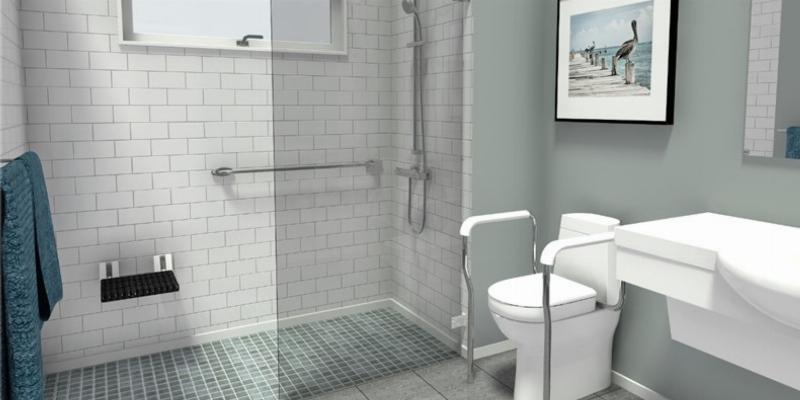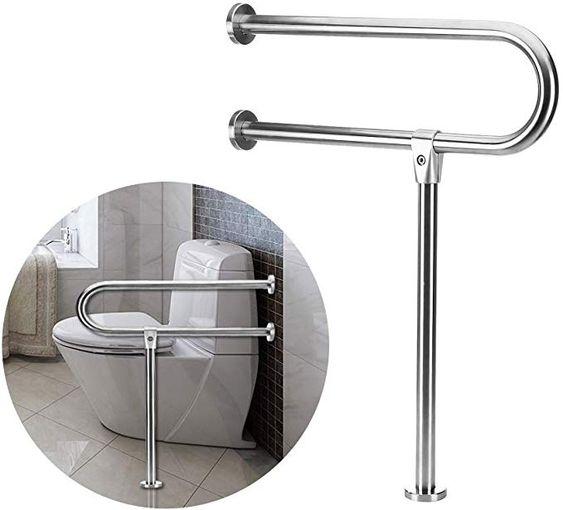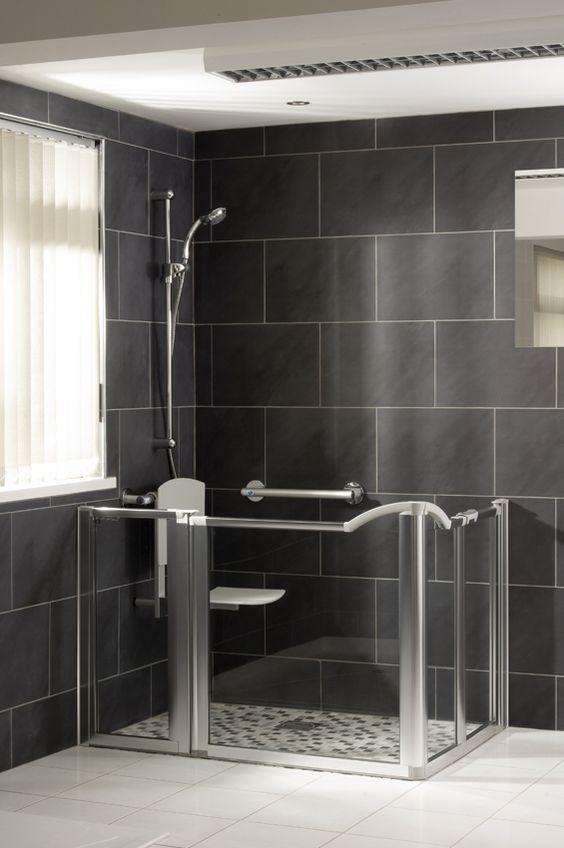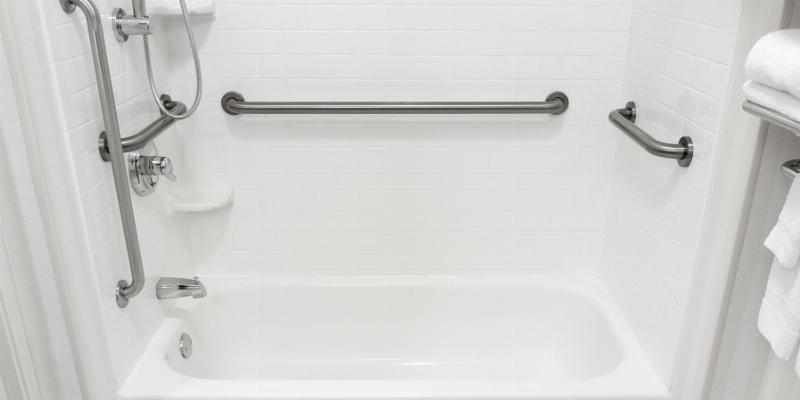ADA BATHROOM REQUIREMENTS Houston Texas and Surrounding Areas
Americans with Disabilities Act has its bathroom requirements that help handicapped people to access bathroom facilities easily. Whether it is in private homes or public accommodation facilities, people should comply with the ADA bathroom requirement for the safety of people with disabilities. Failure to comply, files of lawsuits to the bathroom owners due to injuries on handicapped people is likely to occur.
People with disabilities should feel recognized and appreciated, and this should begin right in the way we model our bathrooms. Chapter 6 of the ADA Accessibility Guidelines states all the plumbing and design requirements for bathrooms to meet disabilities’ needs. Each part of the bathroom needs to display readiness and accessible features for people with disabilities. We will look at each bathroom component and its handicap bathroom dimension requirements. (Riley, 2017)
- Sinks and faucets
Most disabled people are likely to be in a wheelchair, making it hard for them to reach high places. You should not install the sinks and faucets at high points that make it hard for the disabled person to reach. From the knee, you should connect the sink 27 inches tall.
The distance from the floor to the sink should exceed 34 inches. Set the depth of the sink at a range of 11-25 inches. The width of the sink will be great at 30 inches. The faucet needs to be one-touch or electronic for easy control. One-hand control of the tap is also essential. (Choice Builder Solutions, 2020)
ProTip Takeaway: The space below the sink should be clear to prevent injuries. On the other hand, the faucets should be painless to control. Control of the faucet should allow less than 5 pounds of pressure to start the tap.
- Toilet
The toilet size, location, and clearance requirements are precise, just as stated by ADA. The toilet seat top should be between 17 and 19 inches high from the floor. The distance from the centerline of the toilet to the walls should be between 16 and 18 inches. The toilet space should offer a diameter of 60 inches turning area to ensure proper turning of the wheelchair.
The clearance from the sidewall should be less than 60 inches. The water closet’s depth installed on the wall should be 56 inches and for the floor installed 59 inches. The toilet flush needs to be in an open area. (Riley, 2017)
ProTip Takeaway: The toilet space needs to be clear. Therefore, the toilet space should not be the same space for a sink, trash can, or any other component. Each component should have its space away from the toilet.
- Grab bars
Bathrooms contain a lot of grab bars, from the shower to the toilet. According to ADA, circular cross-section grab bars should have a diameter of 1 ¼ to 1 ½ inch. Non-circular cross-section grab bars need to have 2 inches of cross-section and 4 to 4.8 inches perimeter.
The distance from the floor to the grab bars should be 33 to 36 inches. There needs to be a space between the wall and the grab bar. Length should be up to or more than 1 ½ inches. The grab bar design should have a smooth surface, easy-to-grab characteristics, and rounded edges that you should not expose in any ends. (Rodriguez, 2021)
ProTip Takeaway: You should not hang towels on grab bars in the shower. Design towel bars separate from the grab bars. The towel bars also have their requirements.
Doors
ADA states that bathroom doors need to be easy to open. The user needs to apply as little force as possible to open the bathroom door. It would help a lot when it is possible to open the door using one hand. The door handles need to be easily accessible. The width of the doorway should be not less than 32 inches.
The angles in which the door opens are also critical. The entry must open at an angle of 90 degrees. The walkways to the bathroom door need to provide a space not less than 80 inches so that an individual with a wheelchair can simply maneuver. The door handles need to be 48 inches from the ground surface. (Buildings, 2009)
ProTip Takeaway: Some commercial facilities have already set bathroom that does not comply with ADA requirements. In that case, there should be a sign on the door of the already existing bathroom. The sign should point in the direction of an ADA-compliant bathroom.
Showers
Both transfer and roll-in shower models should meet ADA standards. Each shower model has its requirement for the location, control features, and location. A transfer shower should have the dimensions, 36 inches by 36 inches, and for a roll-in shower, 36 inches for the width and 60 inches for the depth.
A transfer shower’s entryway needs to be 36 inches wide, while that of a roll-in shower should be 60 inches wide. There need to be grab bars in both shower models that comply with ADA requirements. The space in the shower should also be clear and for showering purposes only. (Riley, 2017)
ProTip Takeaway: Both the transfer and roll-in shower models should have a shower seat with permanent installation features. It would help if you also considered the shower seat dimensions.
Soap dispenser and hand dryer
The depth of soap dispensers and hand dryers needs to be below the lowest components in the bathroom. You should mount the soap dispenser and the hand dryer on the wall. For sinks, up to 20 inches deep, the dispenser and the dryer should be less than 48 inches high.
For sinks with a depth between 20 and 25 inches, the soap dispenser and hand dryer need to have a depth of fewer than 44 inches. The user should not apply a pressure of more than 5 pounds to use the soap dispenser. The dispenser should also favor one-hand usage. (Choice Builder Solutions, 2020)
ProTip Takeaway: ADA encourages cleaning bathrooms, including the area around hand dryers and soap dispensers, daily. That clears anything blocking the user’s way to the sink and any other place around the bathroom.
Bathtubs
The showers aside, people with disabilities may have an interest in using the bathtubs also. For a bathtub to be ADA compliant, it has a width of 30 inches. The area around the bathtubs should be clear for easy accessibility of the bathtub. The top of the bathtubs should include a seat, whether removable or permanent.
The seat should provide comfort as the user have a bath. Besides the seat, at the wall against the bathtub should be grab bars. The floor’s height to the grab bars should be easy to reach for the user to grab and sit on the tub. It would be best if you also consider the depth of the bathtubs. (Riley, 2017)
ProTip Takeaway: Bathtubs can be very risky to use, especially if you do not meet the set standards. The seats of the bathtub need to be stable to prevent slipping away.
Toilet paper dispenser
Like any other bathroom component, you also need to consider the toilet paper dispenser dimensions. The toilet paper dispenser should be between 7 and 9 inches at the front of the toilet. ADA standards require that the floor’s distance to the dispenser should be between 13 and 48 inches. The positioning of the toilet paper dispenser needs to away grab bars. (Choice Builder Solutions, 2020)
ProTip Takeaway: You need to ensure that it is easy to roll off toilet paper from the dispenser. The user should not apply too much force to get toilet paper for the dispenser.
Mirrors
A bathroom will never look complete without a mirror. Every lady will agree with me on that. You may limit individuals that use wheelchairs to using the mirror if you don’t comply with the bathroom components’ ADA requirement. Install the mirror less than 40 inches from the floor to reflect the floor surface if it is above the sink. Install the mirror 35 inches high from the floor if there is no other component below it. (Riley, 2017)
ProTip Takeaway: The surface around the mirror should be enough to allow wheelchair turn-around.
Urinals
The urinal’s rim needs to be less than 30 inches wide at all times. It should also have more than 70 inches of distance on the top of the floor. The distance from the outer area of the ream needs to be 3 ½ inches. The urinal space should also be enough to favor the individuals that utilize wheelchairs. (Choice Builder Solutions, 2020)
ProTip Takeaway: The urinal’s entryway should be wide enough to ensure that users pass through without any trouble.
ADA-compliant bathroom remodeling cost
The average cost of remodeling a bathroom to be ADA compliant is $8,000 to $10,000 for 100 square-foot bathrooms.
|
COMPONENT |
AVERAGE COST |
|
Toilet |
$400 – $1,000 |
|
Sink and cabinets |
$800 to $1,500 |
|
Bathtub |
$2,500 to $5,000 |
|
Mirror |
$150 – $500 |
|
Shower |
$800 to $2,500 |
|
Grab bars |
$100 to $ 500 |
|
Doorway |
$700 to $2,500 |
Are you ready for your bathroom remodeling project in Houston or the surrounding areas?
There should be no limit to the components of the bathroom that people with disabilities should use. ADA came to rescue the disabled people with equal chances and privileges of using the bathroom like all the other people. If you intend to remodel your bathroom to meet ADA requirement, Smart Remodeling LLC have got you covered on that. All you need to do is call us at 832 800 888 9 to get a free consultation regarding bathroom remodeling and its cost.









